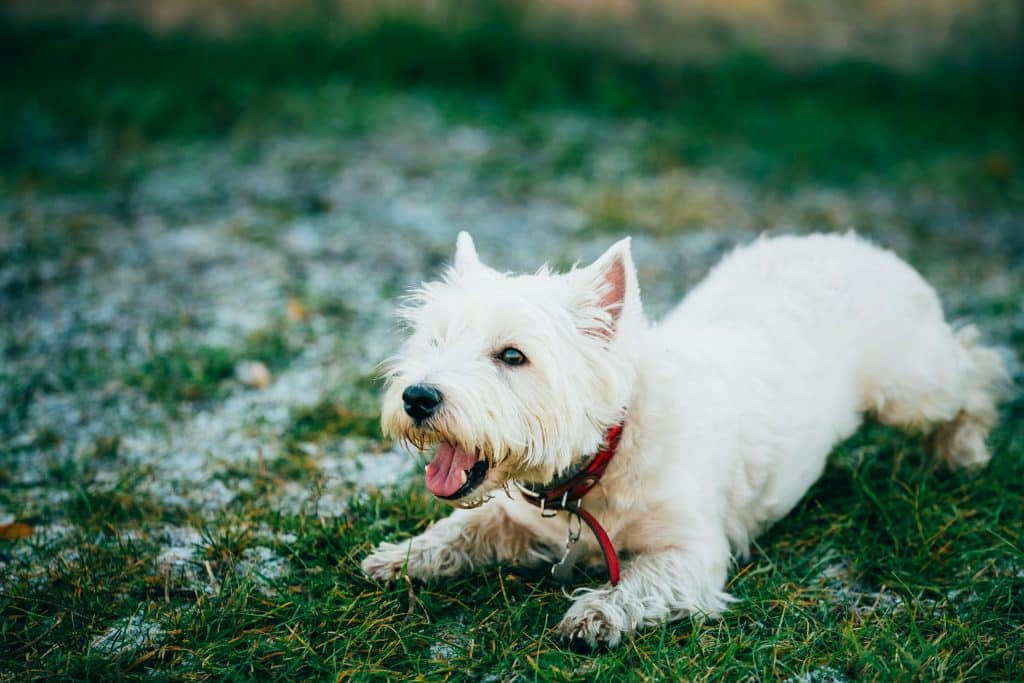Have you ever come home from work and had a long conversation with your dog about your day?
Do those conversations ever make you step back and wonder what your dog is trying to say?
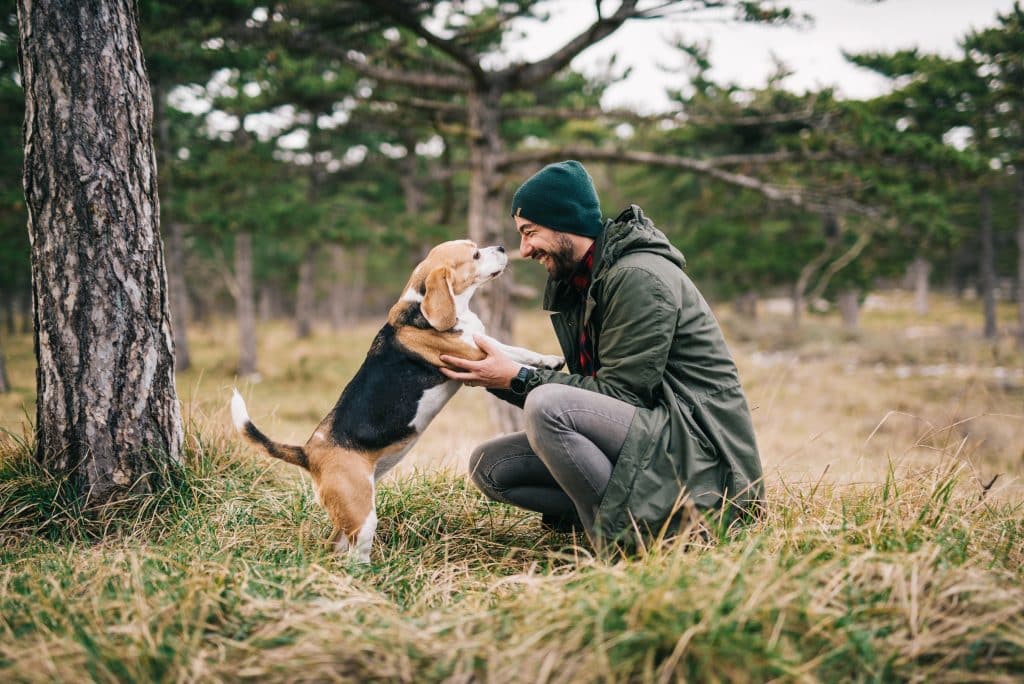
Sure we see the full body wiggle and figure they’re pretty happy. The tail tuck crazy puppy run through the yard when they aren’t massively excited. What about the in between times when maybe things are so obvious and we just wish they would sit down and explain it to us. Dog body language is another form of communication.
Being so speech oriented a lot of us learn to interpret every sound our dog makes, the warning growl, the happy yip, the guilty whimper. I’m sure you’ve wanted to know more though but didn’t know how. Dogs show us so much through body language, so let’s take a look at what it means when our dogs strike a pose.
Eyes
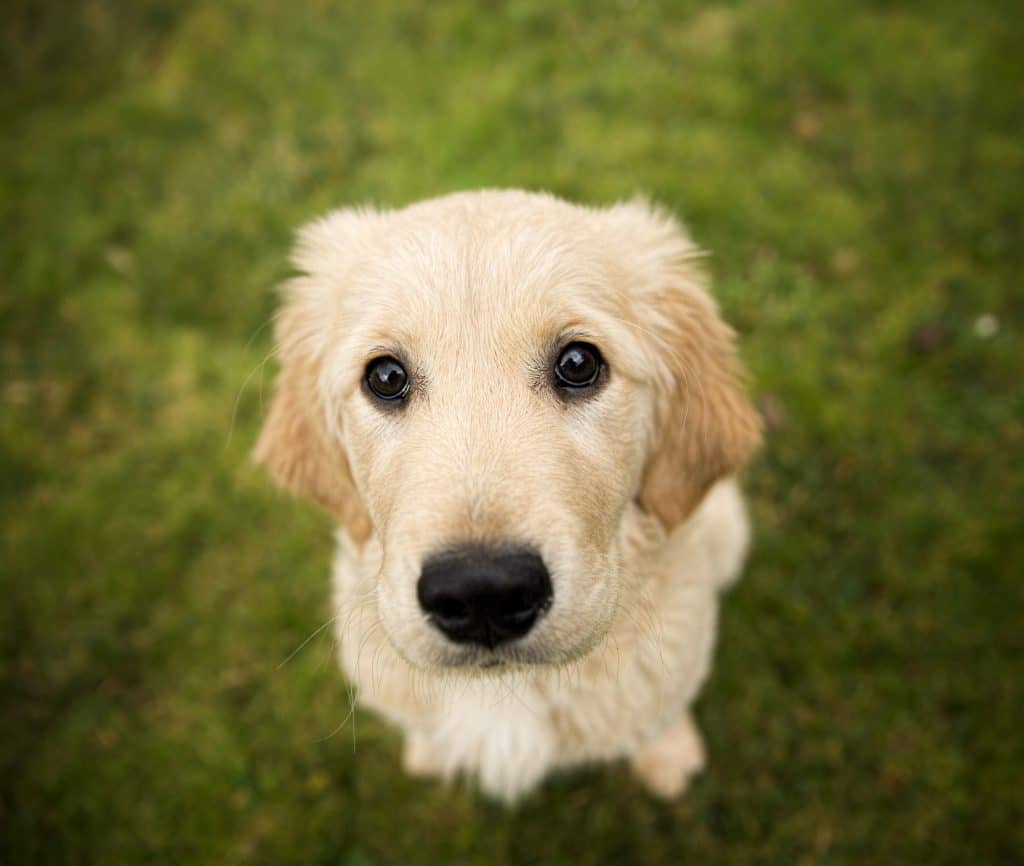
The eyes are surrounded by muscles and show tension like the rest of the body. They can almost be a mini version of a body posture evaluation.
Dilation of the pupils is a neurologic response to stimulation. This doesn’t always tell us what the dog is thinking or feeling but it should be a warning that something’s up.
Where is the dog looking and how? This will tell us a lot about how the dog feels.
- A direct stare is a challenge. This could mean danger.
- Total avoidance of eye contact indicates anxiety or fear.
- Wide open eyes with a lot of white showing indicates fear or anxiety.
- Fully dilated pupils indicate fear.
Never try to force a dog to make direct eye contact when they are seeking avoidance. This may force them to become aggressive due to increasing fear and confrontation.
Respond to the dogs avoidance by not approaching, give him/her some space. It may be best not to approach some dogs for several encounters until they decide they trust the interaction.
Mouth
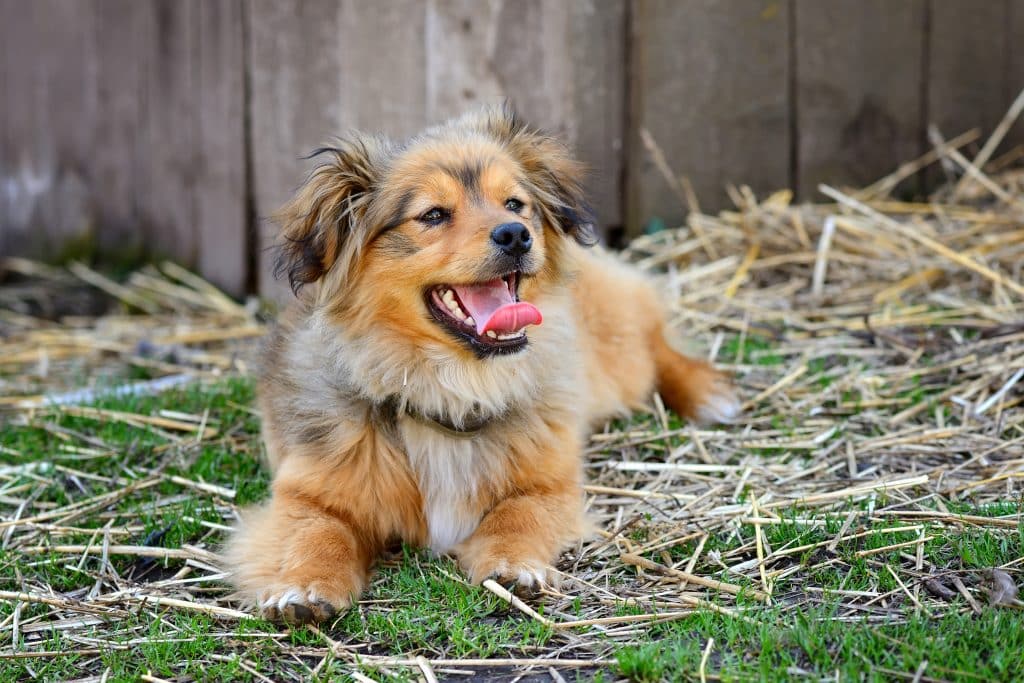
This can actually be a really tough gesture to determine in dogs. Seeing a dog bare its teeth usually indicates danger, but many of us know that some dogs actually smile, baring all or some of their teeth.
I don’t recommend trying to over-interpret a dog’s mouth expression. Here’s a list of some things you will see and the meaning:
- Mouth closed, lips pulled back. This can indicate nausea, anxiety, stress.
- Open mouth lips pulled back. This could be a snarl or a smile.
- Relaxed jaw, slightly open mouth. This usually indicates the dog is calm.
- Closed mouth, no motion. This usually indicates fear or aggression.
When getting to know your own dog you will find that they are consistent. The smile will always look the same, growling will always look and sound the same. You can learn your dog’s specific gestures effectively.
If you think your dog is smiling and not snarling look at the rest of the body, is it frozen like fear? Is the body wagging with enthusiasm? Check the ears, tail, posture to figure out your dog. If you are uncertain give the dog some space.
Some owners have not had the opportunity to learn their dog’s facial expressions so if your mind says to be careful, listen to it.
Ears
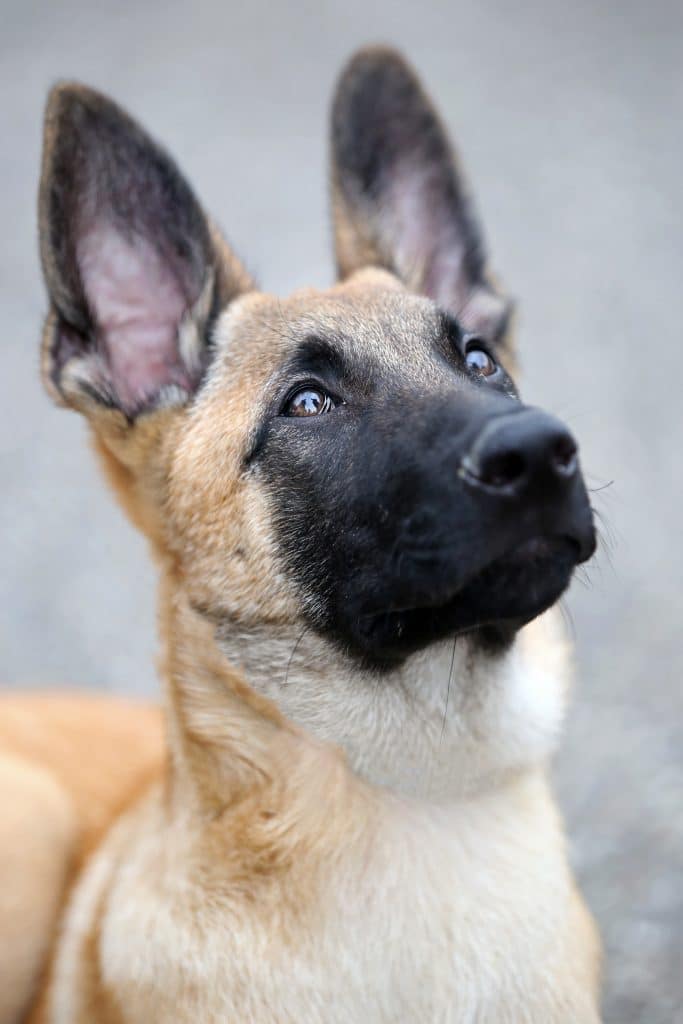
There are essentially three positions a dog can hold its ear in, forward, back, and side. This of course can be difficult to see if a dog has really long floppy ears or has had a crop.
- Dogs will direct their ears forward to something that interests them. What they do next depends on how they interpret it.
- The ears down to the side means they are unsure of what is happening.
- Ears back usually means anxiety, though some dogs will pin their ears back when extremely excited, sort of like the teeth baring during a smile.
Ear infections affect ear position, particularly drooping. It’s a good idea to always remember there can be some odd reasons for body positions.
Tail
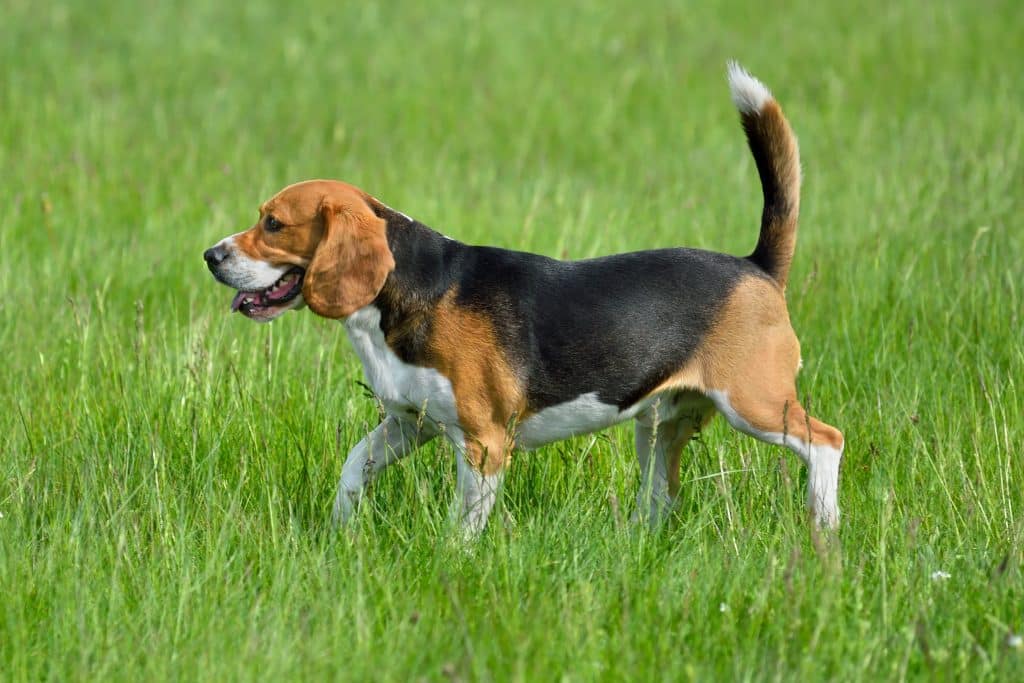
Movement and position of your dog’s tail actually tells us a lot about how they feel. Motion is a big factor to take note of here.
- If the tail is tucked between the legs the dog is frightened.
- If the tail is fully erect and not moving the dog is hyper-alert which could lead to aggression.
- If the tail is back or up and wagging vigorously the dog is generally excited in a positive way.
- If the tail is fully erect and vibrating or what may look like tiny wags of in inch or two the dog is hyper-stimulated and could become aggressive.
This is another time to be aware of non-behavioral issues. Dogs with rudder tail (muscle exhaustion usually due to swimming) will hold the talk tucked down. Also dogs with chronic pelvic region arthritis may resist wagging.
Sweat
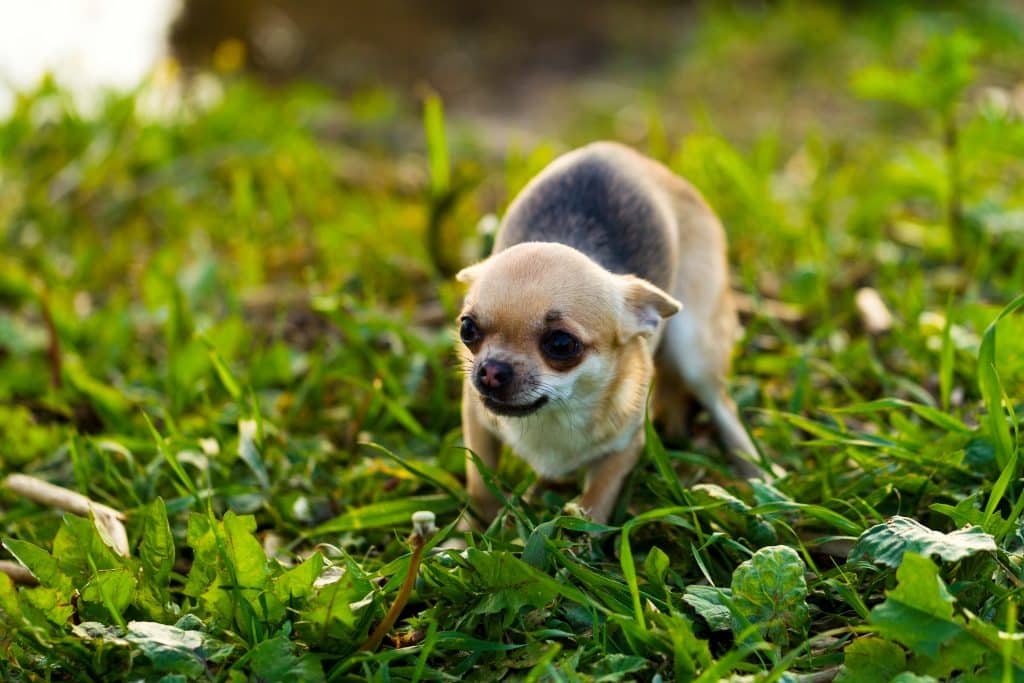
This is of little value in most situations. Dog’s sweat through their foot pads, so on a solid floor one may see little wet paw prints indicating the dog is nervous. Of course don’t forget to be aware if there was water somewhere the dog walked through before worrying about this one.
Hair/Fur
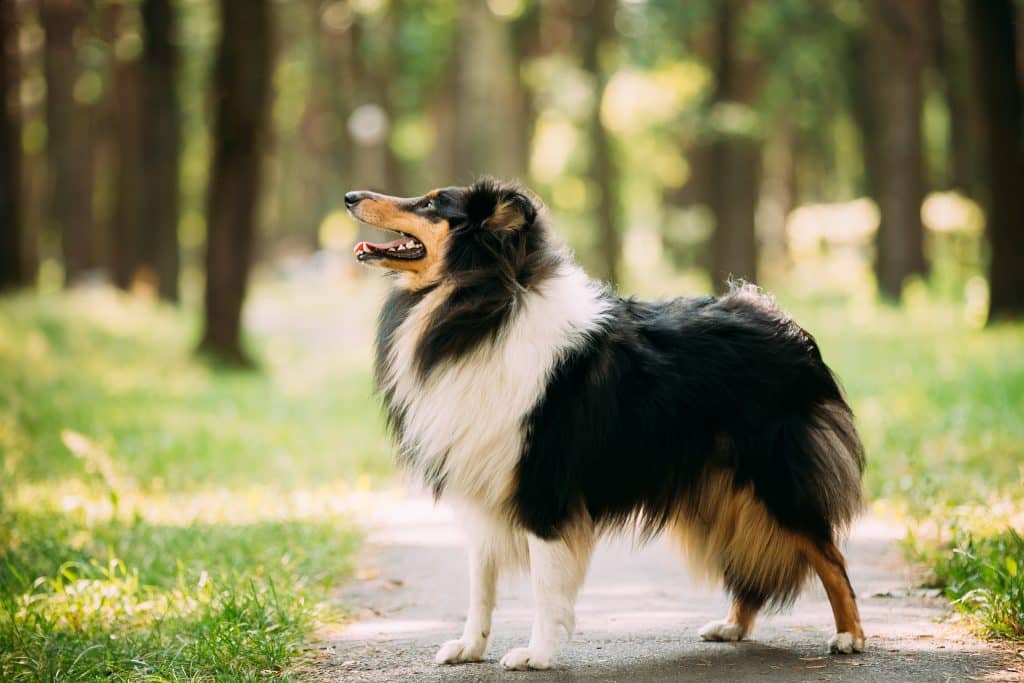
Dogs even more so than people have hairs that respond to piloerection. This means that the hairs literally stand up when a dog is overstimulated, indicating fear or aggression.
The hairs will raise up most commonly on the scruff and sometimes down the dog’s back. Don’t confuse this with a hair ridge probably best demonstrated by the normal coat of a Rhodesian ridgeback.
Some dogs don’t have many hairs with this reflex so a normal flat coat doesn’t mean that the dog is feeling okay about everything.
Body Movement

Dog’s have a natural way of indicating how they feel by the way the move their body.
- Forward posture generally indicates interest and excitement. The ears, tail and body are leaned toward the point of interest.
- The full body wag is often done by excited happy dogs that want to play. It almost seems like the tail is wagging the whole dog.
- Freezing is a sign of anxiety/fear. The dog’s ears, mouth, tail, legs are statue like. At this point the dog is trying to assess and respond meaning there could be danger.
- Crouching low can be a sign of submission and also willingness to play.
- Showing the belly indicates submission.
- Sitting can be a passive waiting gesture or submission.
- Laying down on the side generally indicates the dog is relaxed and feels safe.
Some dogs experience joint and muscle pain as they get older and can become very aggressive when the region of sensitivity is handled. They will often use body posture to try and avoid this by moving away.
It is a bad idea to pursue a dog that is actively trying to to pull away because aggression is usually the only other option they have left if you force the issue.
Dogs that are fearful will often place themselves between their owner and a stranger. People often confuse this with a positive protective behavior and encourage it. Never reach over a dog that had placed itself between you and the owner, they will often bite.
Understanding Dog Body Posture

Curiosity
Woof Woof
This is when your dog is ears forward, relaxed muscles. The tail may be wagging or still but will be relaxed. Curious dogs will often approach the person or item of interest.
If the dog is hesitant even though they show curiosity body language it is a good idea to let them approach you.
Barking may occur and it’s usually a rapid higher pitched type bark.
Relaxed
Woof Woof
Relaxation is shown by side or slightly forward/back ears, the tail is usually mid level and wagging slowly or still. Your dog will often sit or lie down.
The focus will generally be varied, looking around or eyes half closed, not directed at anything. Essentially there will be a lack of tension such as erect hairs, erect tail, erect ears.
It’s important to remember with children a relaxed dog will still react swiftly to pain.
Fearful/Anxious
Woof Woof
In this situation your dog will avoid direct eye contact, turning his/her head away from the fearful object or person. The ears will often lay low to the side, occasionally back. The hairs across the top of the neck and back may be up.
Your dog will often try to back away from the situation. The tail will often be tucked underneath the body. Some dogs will freeze their whole body, almost like they don’t want to be seen.
Anxious
Woof Woof
There is a lot of facial activity with anxiety. Your dog will lick his/her lips, yawn and avoid eye contact. He/She will often crouch down.
Pacing is a common anxiety behavior, often with frequent stops to look at the source of the anxiety.
Your dog also may sit while avoiding looking directly at the source of anxiety. When in an unfamiliar place the dog will often walk slow, keep the tail at body height and look around a lot surveying the environment.
There may be vocalizing such as whining or occasional barking.
Stressed Out
Woof Woof
This is a step up from anxiety. We should all be cautious with an anxious dog, when the dog escalates to stressed out we may be dealing with greater danger.
Your dog may display the common anxiety behaviors of yawning, crouching, licking the lips. He/She may also try to crawl away.
Often your dog will have a large amount of head movement and eye scanning looking for a way out. Fear induced aggression is common if the stress gets too strong.
Whining type vocalizing will often accompany this.
Displacement
Woof Woof
This behavior confuses a lot of people. Dogs have a strong sense of hierarchy. When they are put in a stressful situation and can’t respond they will take out their frustrations on a subordinate.
For example if there is a stray dog running around marking the outside of your house and your dominant dog can’t get outside to run him/her off. Your dog may become frustrated and start attacking the other dog in your house. Sometimes the dog will displace aggression to children in the household because they are not viewed as high in the hierarchy.
Defensive
Woof Woof
When a dog is being defensive they want to get away from what frightens them. For safety it is very important to remember that one way to escape is to attack.
The defense postures often include:
- ears back
- baring teeth
- crouching low
- low tail carriage
This behavior is unfortunately encouraged at times because the owner thinks the dog is being protective so they give the dog positive feedback. What this is telling the dog is that they are correct in being afraid and should continue to be vigilant.
A dog that is truly protective does not exhibit the fear/anxiety behaviors.
Look Away
Woof Woof
Dogs show avoidance when they want to get away from something that frightens them or makes them anxious. They will look to the side or anywhere to not make eye contact. This usually won’t lead to aggression if the dog is left alone.
If you force the issue they will sometimes move their whole body to avoid. It’s never a good idea though to force a dog that is avoiding because at some point it can turn to fear aggression.
Playful
Woof Woof
Playful behavior can be confusing. Bouncing, lunging, gentle biting are all part of playing. Many dogs will bow or crouch, wag the tail rapidly and sometimes pounce on another dog.
The proper degree of play behavior is one of the things that puppies learn during proper socialization.
As they rough house with each other if they get carried away the puppy being hurt will generally let out a high pitched bark or squeal. This indicates the behavior was too rough.
Recognizing these messages can be a real problem for dogs that do not get well socialized under the age of 12 weeks.
Unsocialized dogs may not recognize the signals another dog is giving to indicate play is over which can result in a fight.
Playful dogs may vocalize in a high pitch short quick type bark though they will sometimes growl during rough play and if you don’t know the dog this can be very difficult to interpret.
Dog Wagging Tail
Woof Woof
The speed of the wag and the height of the tail tell us a lot about how our dog is feeling. A very short vibrating kind of wag is usually a stressed or aggressive dog.
A high tail carriage wag is usually an overstimulated dog.
A tail at body level with a rapid wide wag is usually a happy or playful dog.
Dog Decoder App

So many of us are visual learners. This app gives you a series of images with descriptions of the meaning behind certain dog postures.
Reading through the article it’s clear that dog communication can be subtle and small postural changes can have big meanings in dog communication.
Dogs are all individuals and though we haven’t mastered a language between humans and dogs we have learned a lot about what they communicate through posture.
It’s a great starting point both for understanding your dog and other dogs in your community.
How to help yourself with the dog decoder app
- Learn meanings behind dog postures and movements.
- Discover the subtleties between dog postures such as ear and tail carriage.
- Increase your understanding of your dog’s needs and wants.
- Have a better grasp on the behavior of new dogs you meet.
- Predict more effectively if there will be problems introducing your dog to a new friend.
Translating Woofs to Words
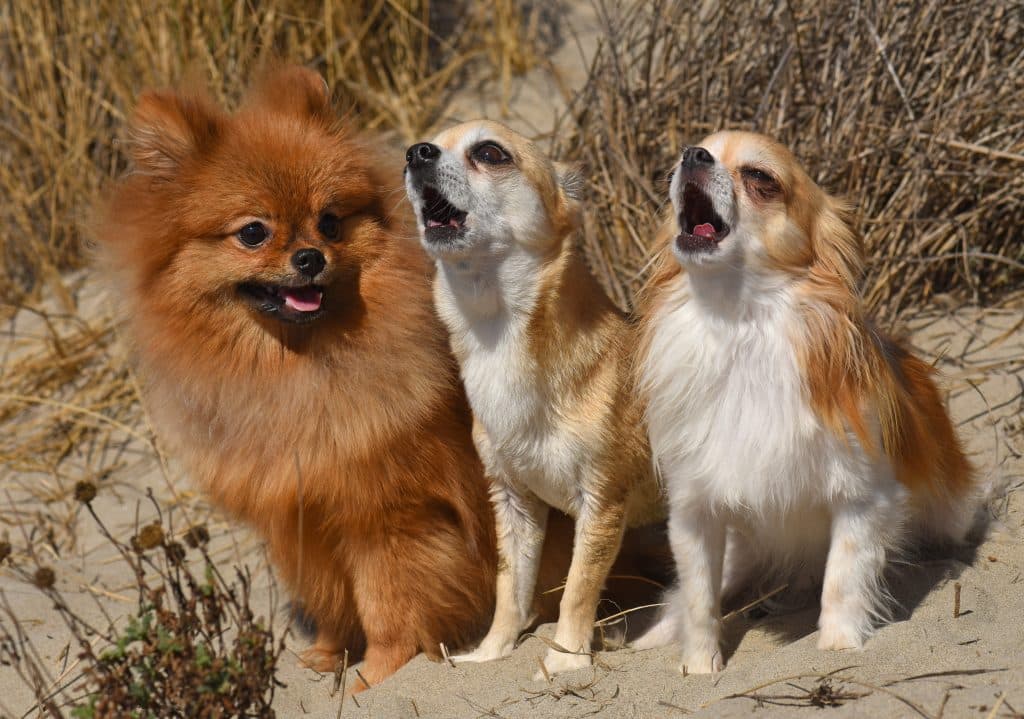
String of high pitched barks: “OH MY GOD, OH MY GOD, MY GOD THAT’S MY LEASH!”
Repetative barks mixed with growls: “Mom, Dad get up! Something’s not right.”
Sharp quick barks: “Snake! Look…right there!”
Repetative high pitch barks with pauses. “It’s walk time. It’s walk time. Come on. Please, please, please hurry up.”
High pitched bark, lips pulled back: “I’ve never seen this dog at the park. Is he safe? What should I do?”
F.A.Q
Q: Can Dogs Understand Human Body Language?
A: Absolutely. They often read it more effectively than we do. Imagine those times when you are alone, experiencing something, and the dog seems to know just the right response.
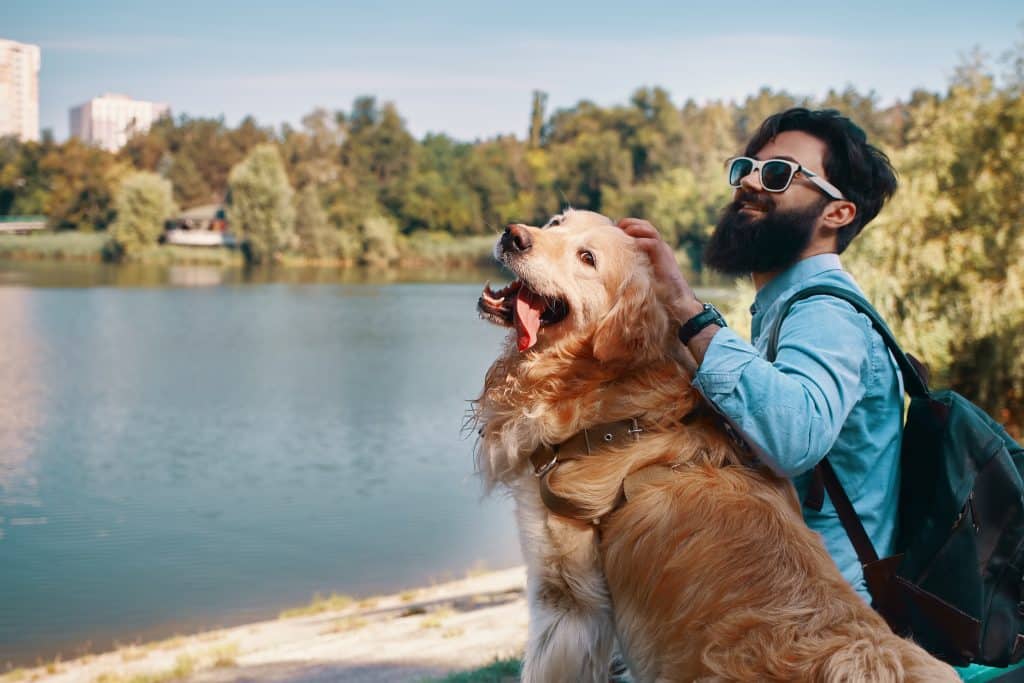
Q: Why does my dog look sad?
A:Many people worry if their dog is sad. The dog may be laying down, resting his/her head on the paws and just moving their eyes to watch the family walk around. You might wonder, “Is my dog sad and doesn’t want to walk around the house with us.” Often the eyes are a bit droopy making the eyes look big and a sad puppy face.
This is actually a common posture for a very relaxed or very tired dog. There is no tension or anxiety in the ears or mouth. Their eye muscles relax more than ours and when very tired will often droop. This would be typical after a big hike, or play in the dog park.
A really happy dog with a relaxed mouth and bouncing around is pretty obviously having a good time. The attitude is all up and forward and it’s easier to interpret. A very calm dog can be a bit of a mystery because the features are placid.
A dog that is very relaxed with its head on its paws, mouth closed and seemingly expressionless doesn’t show the exuberance we are used to that means happy. The visual tracking with only eyebrow movements might be misinterpreted as concern. However take a look at the dog’s body language over all. The feet are tucked under, not prepared for anything, the muscles are very relaxed making even the eyes droopy. This is a pup that has no concerns in the world and feels safe to relaxed and take it all in.

Q: Why Does My Dog Stare At Me While Pooping?
A: So this is often an awkward time. People don’t generally look for company or interaction while pooping. Dog’s though have no such concerns. Not only is it a natural function but served a marking benefit.
When a dog stops to posture for pooping they are vulnerable. They may stare at you to maintain a connection during this dangerous time. Your body language could tell them if danger is near.
Don’t feel awkward about the stare, your dog is trusting you for backup.
Maybe your dog follows you in the bathroom to return the favor…
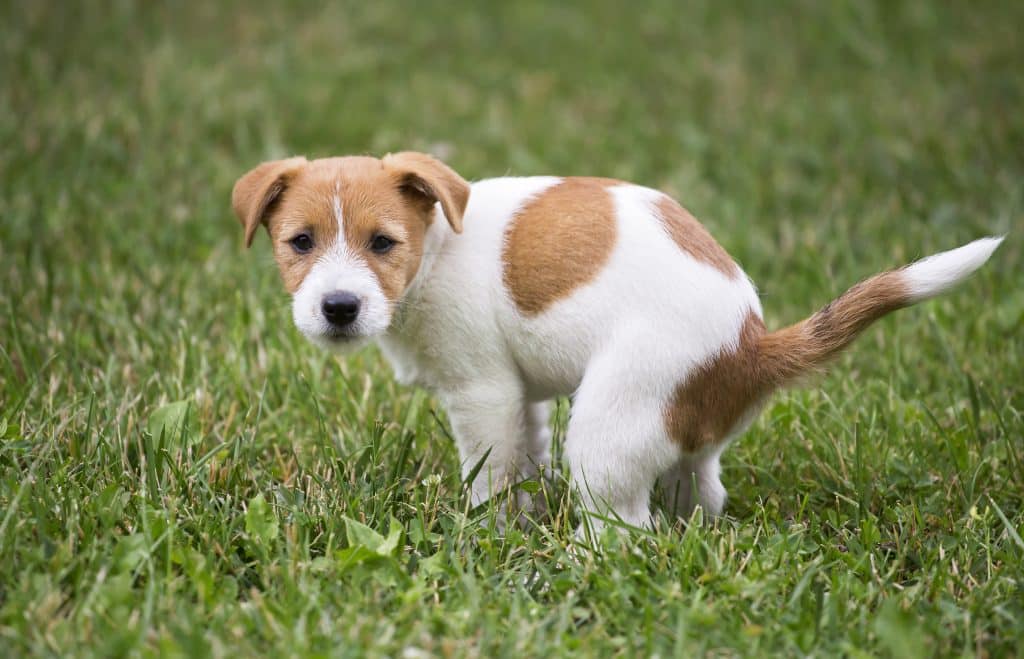
Q: How Do Dogs Communicate with Each Other?
A: Dogs have a huge vocabulary. They use all of the sense, eye contact, posture, smell, sound. They will usually use all of them at once. For example and excited dog will have erect ears, a forward posture and a high yipping sound. A frightened dog will have a low body carriage, flattened ears and a low growl. Each part holds meaning. Scent marking can be effective for miles due to their superior sense of smell.
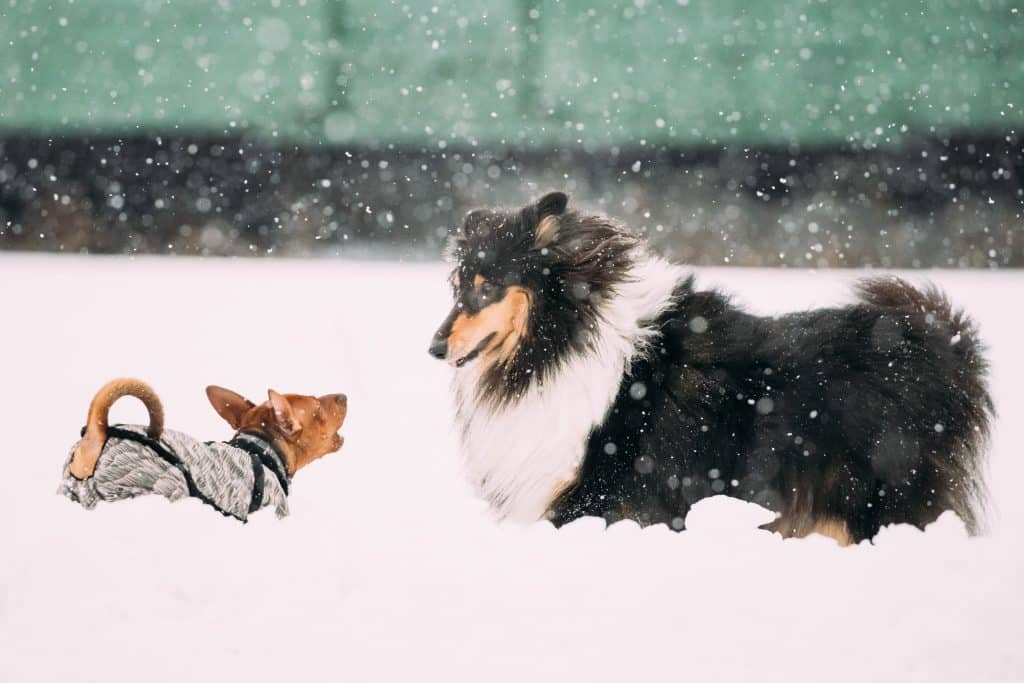
Final Thoughts
Learning dog body language is a must if you want to communicate more with your dog. The thing is they’re trying, in dog speak, all the time. Of course we can’t understand on the same level we talk to other people, but it will open a whole new world for you and your dog.
Deciphering your own dog will make things a lot more fun. You can’t plan to know every dog you meet because of the subtlety of postural language but you can be safer and have more fun the more you know. Imagine the smiles on your family’s face when instead of everyone staring at the dog saying, “What is he/she doing?” You can be the family interpreter.
Like any language why not spend a few minutes every day learning to speak dog.
We all have those moments when our dog does something unusual or gives us what seems like a funny look and we wonder what they’re thinking. With our desire to make our dog’s life as rewarding and fun as possible anything we can do to improve our understanding of each other would help.
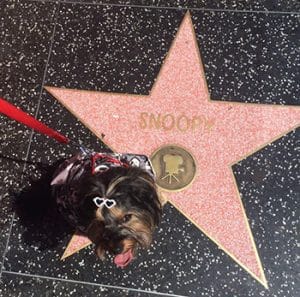
One Request From Speedy
Dr. Jennifer Peters put so much effort writing this blog post to provide value to the dog parent community. It’ll be very helpful for me, if you consider sharing it on social media networks.
SHARING IS ♥️

